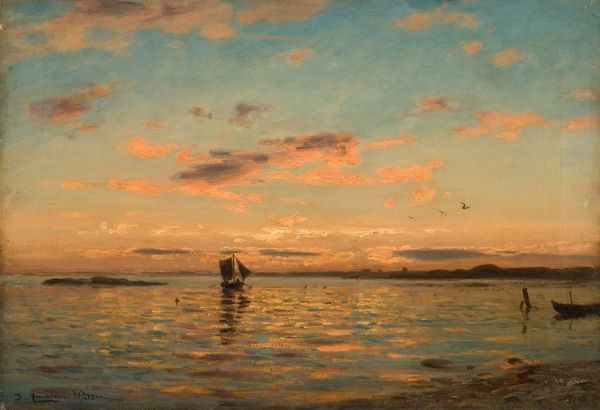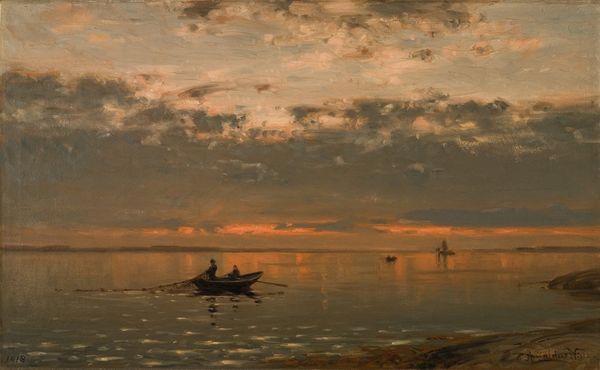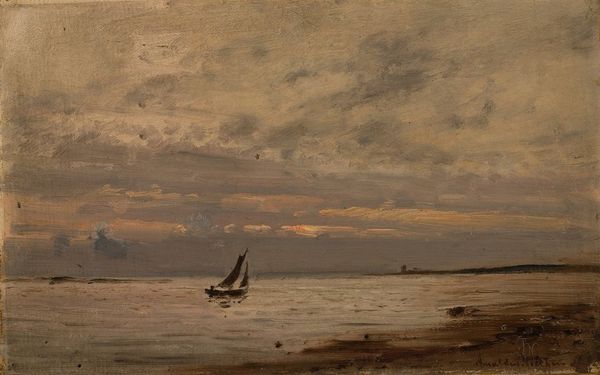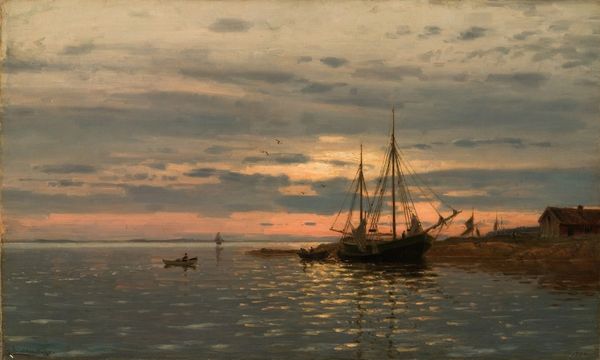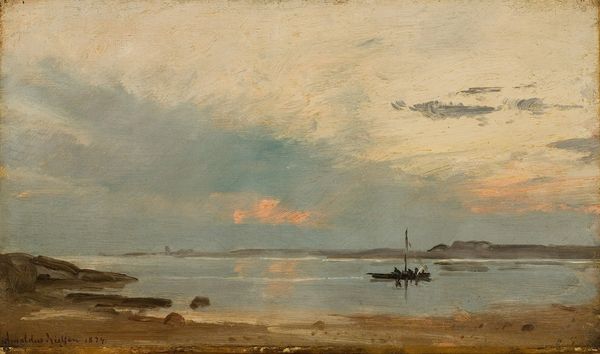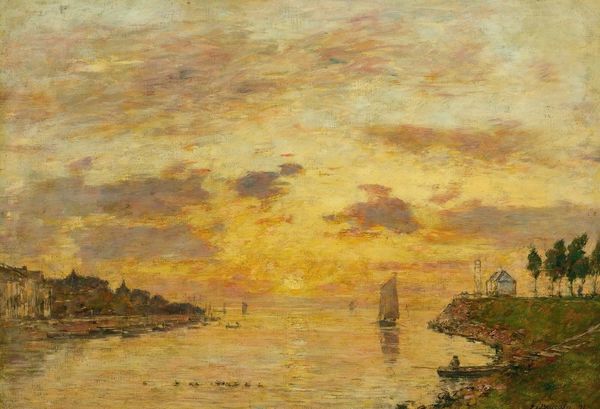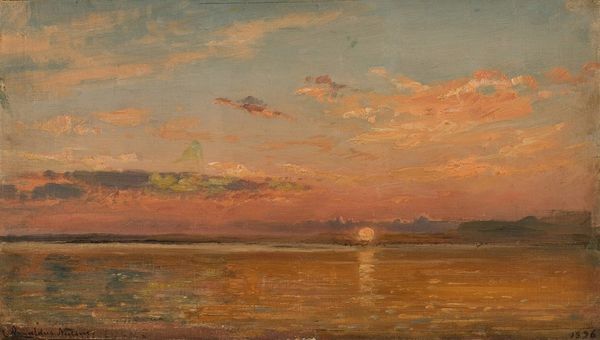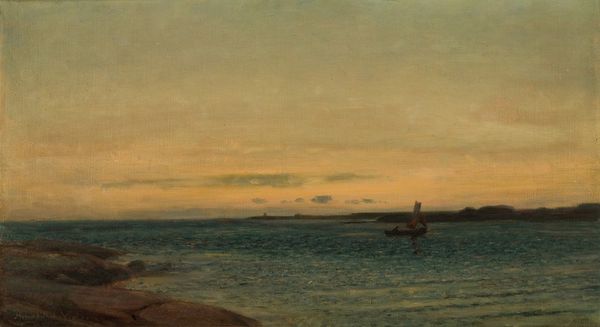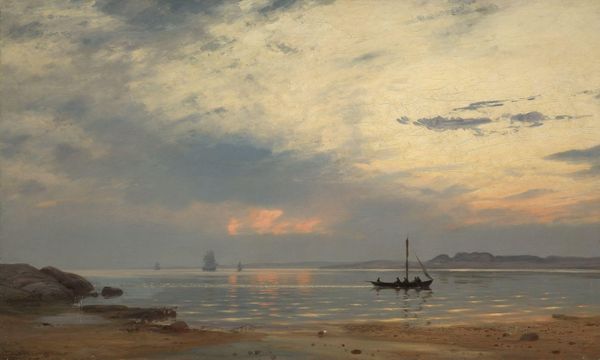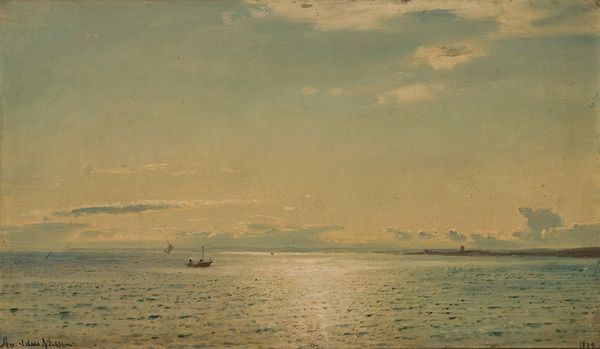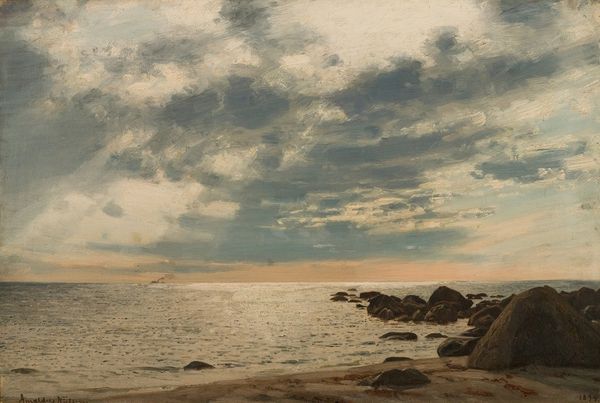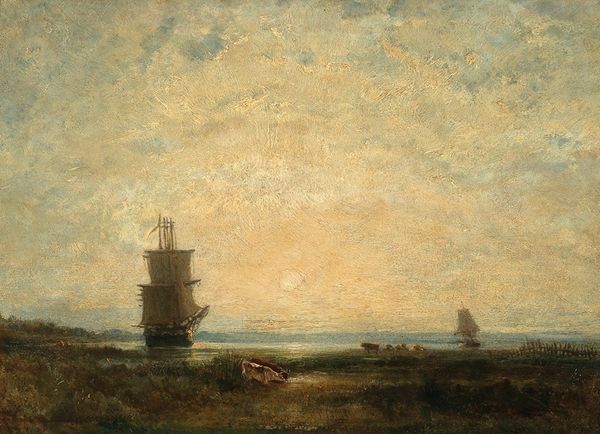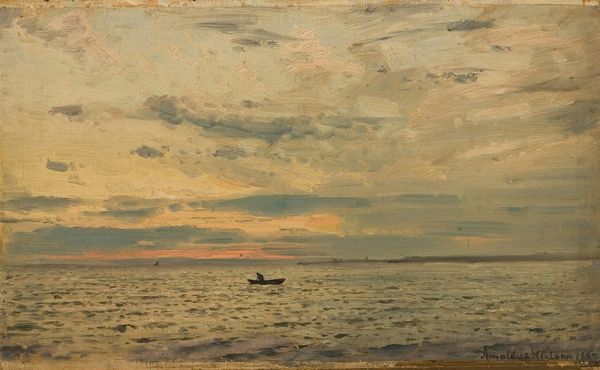
Copyright: Public Domain: Artvee
Curator: It evokes a serene and almost melancholic atmosphere, wouldn’t you agree? The water is so still, and that light feels so distant. Editor: It certainly does. This is Amaldus Nielsen’s "Solnedgang, Hvaler", painted in 1897. We should take a closer look at Nielsen's material choices here; it is oil paint on what appears to be a relatively small canvas. I would suggest that this contributes significantly to its intimate, almost gem-like quality. It is important to also consider that he embraced plein-air painting—going out of his studio—to capture the nuances of natural light and atmosphere. Curator: Absolutely, and I find it so interesting to think about the socio-political backdrop against which this scene unfolds. The late 19th century in Norway was marked by a growing national identity. Landscapes like this were powerfully evocative in affirming Norwegian place and culture, as there was growing national consciousness towards Norway as an independent place and culture. It’s more than just a pretty picture of a sunset. It becomes a visual statement of national pride. Editor: Well, and this small boat suggests that even simple labor and fishing traditions carry an emotional weight as a symbol. If you look at the brushwork, especially in the sky, the pigment is manipulated to capture that fleeting moment of the sunset, the physical manifestation of something quite transient. The economic structures behind that paint would be so much more localised than today, reflecting the conditions in Norway for producing material culture. Curator: Very true. Also, consider the role of galleries and art societies at the time in shaping Nielsen’s career and visibility. It was a network that mediated how his art was consumed and interpreted by the public. Art historians often focus on the avant-garde, but figures like Nielsen were equally crucial in establishing a national artistic identity and contributing to the overall visual culture of Norway. Editor: So true. It also feels relevant to observe that while not revolutionary, his handling of oil paints feels like an investment of careful, localised effort into creating meaning. I always leave this picture feeling so impacted by such beautiful labor. Curator: Yes, and considering his work through the lens of the art market helps us understand his lasting impact. The history of his sales and acquisitions contributes to a deeper understanding of the art's circulation and cultural relevance throughout the years.
Comments
No comments
Be the first to comment and join the conversation on the ultimate creative platform.
